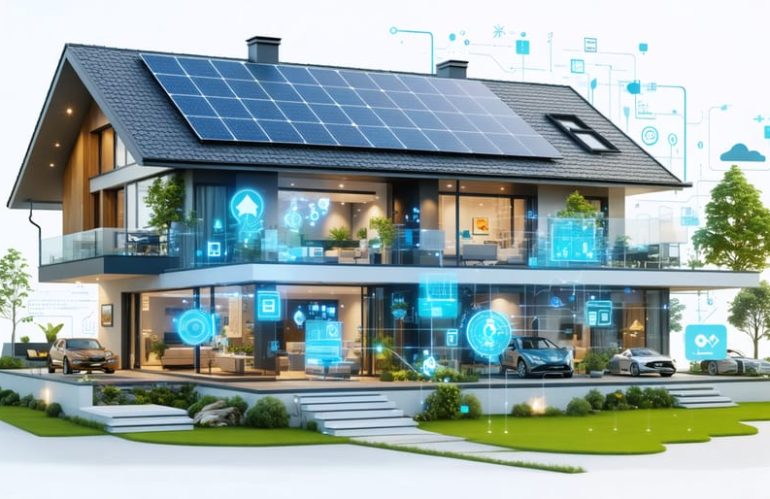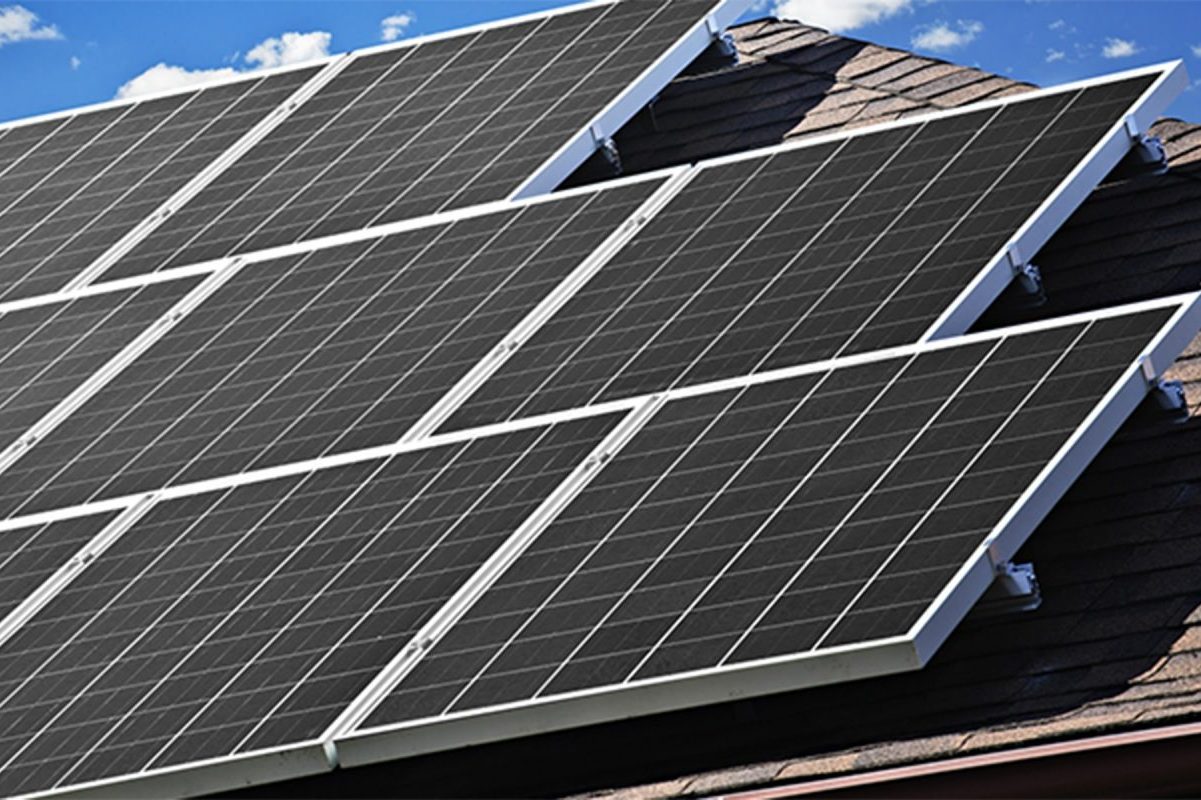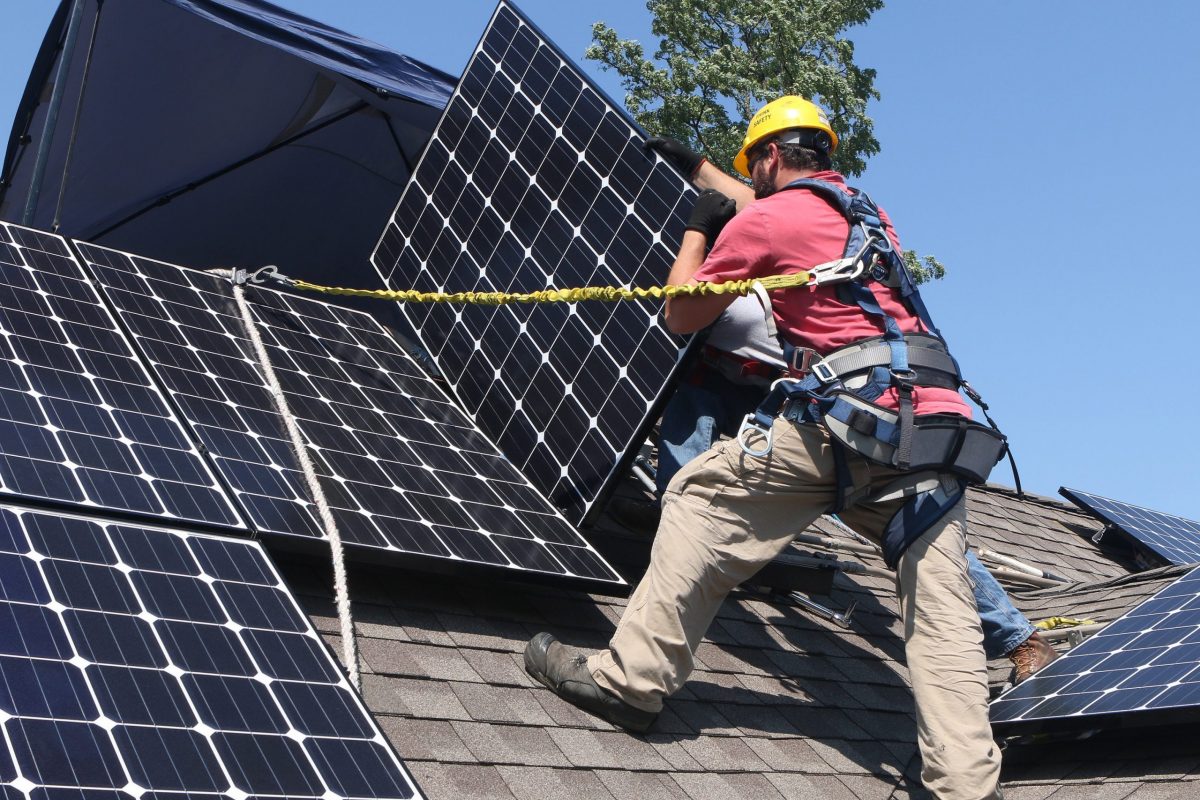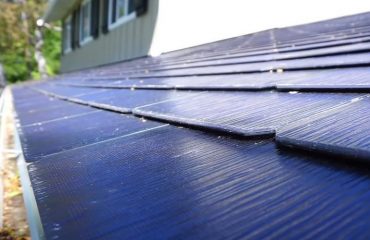Solar innovation is revolutionizing how we power our homes, transforming traditional energy systems into intelligent, efficient powerhouses. As the growing solar industry pushes boundaries, breakthrough technologies like bifacial panels, AI-powered optimization systems, and advanced energy storage solutions are making clean energy more accessible and affordable than ever before. These game-changing developments aren’t just reshaping the renewable energy landscape – they’re delivering tangible benefits to homeowners through increased efficiency, lower electricity bills, and enhanced energy independence. From transparent solar cells that turn windows into power generators to smart micro-inverters that maximize energy harvest in challenging conditions, today’s solar innovations are setting new standards for sustainable living while proving that the future of residential energy is both bright and revolutionary.
The New Wave of Solar Innovation
Smart Solar Integration
Modern solar systems are becoming increasingly intelligent, thanks to the integration of artificial intelligence and Internet of Things (IoT) technology. These smart features help homeowners maximize their solar investment by automatically adjusting energy consumption patterns and optimizing power generation throughout the day.
Smart solar systems use weather forecasting data and real-time monitoring to predict energy production and adjust household energy usage accordingly. For example, your system might automatically run your dishwasher during peak solar production hours or store excess energy in batteries for later use.
The IoT sensors in these systems provide detailed insights through user-friendly mobile apps, letting you track energy production, consumption, and savings from anywhere. You can receive instant notifications about system performance and maintenance needs, ensuring your solar installation operates at peak efficiency.
These intelligent systems also learn from your household’s energy patterns, creating customized recommendations to help you save more. Some advanced features include automatic panel cleaning schedules, theft detection, and integration with smart home devices like thermostats and electric vehicle chargers.
By combining solar power with smart technology, homeowners can achieve greater energy independence while simplifying the management of their solar investment.
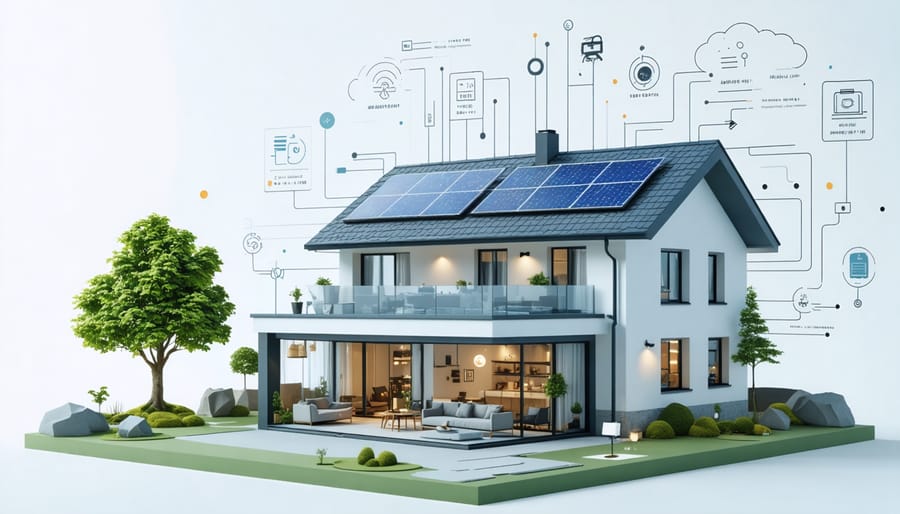
Aesthetic Innovations
Gone are the days when solar panels were seen as unsightly additions to homes. Today’s solar innovators are revolutionizing the aesthetic appeal of solar technology, making it more attractive and architecturally integrated than ever before. Solar roof tiles, which perfectly mimic traditional roofing materials, now offer a seamless look while generating clean energy. These innovative designs come in various styles, from slate to terracotta, allowing homeowners to maintain their home’s character while embracing renewable energy.
Color-matching technology has also evolved, enabling manufacturers to create panels that blend with existing roof colors. Some companies now offer customizable frame colors and panel arrangements that complement different architectural styles. Transparent solar panels are making their way into windows and skylights, turning ordinary glass surfaces into power-generating elements without compromising natural light or views.
Perhaps most exciting are the new solar skin designs that can display custom patterns and images while maintaining high energy efficiency. This technology allows solar installations to become architectural features rather than mere functional additions, opening up creative possibilities for homeowners who want to make a style statement while going green.
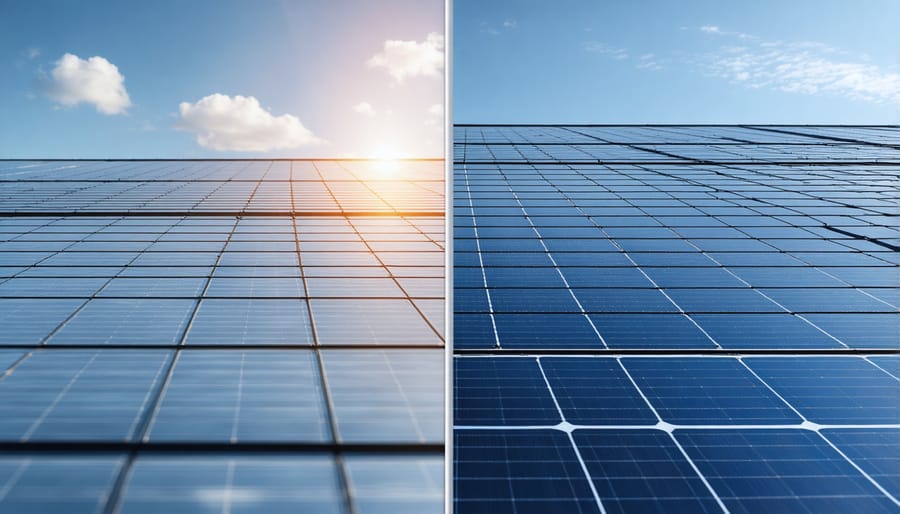
Game-Changing Solar Solutions
Energy Storage Breakthroughs
One of the most exciting developments in solar technology is the revolution in energy storage solutions. Modern solar batteries now offer homeowners unprecedented control over their energy usage, with systems that can power homes through the night and during cloudy days. The latest lithium-ion batteries are smaller, more efficient, and last significantly longer than their predecessors, making them an attractive option for residential solar installations.
Smart battery systems have transformed how we store and use solar energy. These intelligent units can automatically decide when to store power and when to use it, maximizing savings by drawing from the battery during peak rate periods. Some systems even learn your household’s energy patterns to optimize performance further.
Flow batteries represent another breakthrough, offering longer lifespans and improved safety compared to traditional options. These batteries use liquid electrolytes to store energy, making them particularly suitable for larger residential installations and providing reliable backup power during outages.
Perhaps most exciting is the development of solid-state batteries, which promise even greater energy density and safety features. While still in development, these next-generation storage solutions could dramatically reduce installation space requirements and maintenance needs.
Thermal energy storage is also gaining traction, using excess solar power to heat materials that can later release energy when needed. This technology is especially effective for home heating and hot water systems, offering a practical solution for energy-intensive household activities.
Installation Innovations
Modern solar installation has undergone a remarkable transformation, making the process faster, safer, and more cost-effective than ever before. Revolutionary mounting systems now allow installers to secure panels without drilling into roof structures, preserving home integrity while cutting installation time in half. These innovative rail-less systems use advanced adhesives and specialized brackets that distribute weight evenly across the roof surface.
The rise of plug-and-play components has dramatically simplified the installation process. Pre-assembled microinverters and power optimizers now snap together like building blocks, reducing the complexity of wiring and minimizing the potential for installation errors. This standardization has opened up exciting opportunities in solar installation careers, making the field more accessible to newcomers.
Digital design tools have also revolutionized the planning phase. Using satellite imagery and 3D modeling, installers can now create precise installation plans before setting foot on your property. These tools account for roof angles, shading patterns, and local weather conditions to optimize panel placement and maximize energy production.
Perhaps most exciting for homeowners is the development of quick-mount systems that can complete a typical residential installation in just one or two days, compared to the week-long process of the past. This efficiency not only reduces labor costs but also minimizes disruption to your daily routine.
Real Impact on Homeowners
Financial Benefits
The financial rewards of embracing innovative solar technology extend far beyond environmental benefits. Homeowners implementing the latest solar solutions typically see a 50-70% reduction in their monthly electricity bills, with some achieving complete energy independence. Modern solar systems, enhanced by smart monitoring and AI-driven optimization, can boost energy production by up to 25% compared to traditional panels.
Investment returns have become increasingly attractive, with most homeowners recouping their initial costs within 5-7 years, down from the previous 10-12 year average. Federal tax credits currently offer a 30% return on solar installation costs, while many states provide additional incentives and rebates. These combined benefits can reduce the total system cost by up to 50%.
Advanced energy storage solutions and dynamic pricing programs allow homeowners to maximize their savings by storing excess energy during peak production and using it during high-rate periods. Smart inverters and monitoring systems help optimize energy consumption patterns, potentially saving an additional $300-500 annually.
Property values also benefit, with solar-equipped homes selling 4.1% higher on average than non-solar properties. When coupled with emerging technologies like bifacial panels and micro-inverters, the long-term financial benefits become even more compelling.

Environmental Impact
Solar innovations are leading the charge in reducing our carbon footprint and creating a more sustainable future. By harnessing the sun’s energy more efficiently, modern solar solutions significantly decrease greenhouse gas emissions compared to traditional power sources. A typical residential solar installation can prevent up to 4-5 metric tons of carbon dioxide emissions annually – equivalent to planting over 100 trees.
These innovative solar technologies also minimize land use impact through creative integration into existing structures. Roof-mounted panels, solar tiles, and transparent solar windows maximize space efficiency while preserving natural habitats. Additionally, newer manufacturing processes for solar components require fewer raw materials and energy than earlier generations, reducing the overall environmental impact of production.
Water conservation is another key benefit, as solar power uses substantially less water than conventional power generation methods. While traditional power plants require massive amounts of water for cooling, solar panels need only occasional cleaning to maintain peak performance.
The environmental advantages extend beyond reducing emissions. Modern solar systems are designed for longevity and recyclability, with many manufacturers implementing take-back programs for end-of-life panels. This circular approach ensures that materials are properly recovered and reused, minimizing waste and supporting a more sustainable energy ecosystem.
As we look to the future, solar innovation continues to accelerate at an unprecedented pace. From more efficient panels to sophisticated energy management systems, these advancements are making solar power increasingly accessible and attractive for homeowners. The collaboration between researchers, manufacturers, and solar energy professionals is driving continuous improvements in technology and affordability.
Now is the perfect time for homeowners to embrace solar power. With federal tax incentives, improved battery storage solutions, and smarter monitoring systems, the benefits of going solar extend far beyond environmental impact. By investing in solar technology today, you’re not just reducing your carbon footprint – you’re future-proofing your home against rising energy costs and contributing to a more sustainable energy grid.
Take the first step by consulting with local solar providers to explore your options. As innovation continues to drive down costs and increase efficiency, the decision to go solar becomes not just an environmental choice, but a smart financial investment for your family’s future. Join the growing community of homeowners who are leading the charge toward a cleaner, more sustainable energy future.

